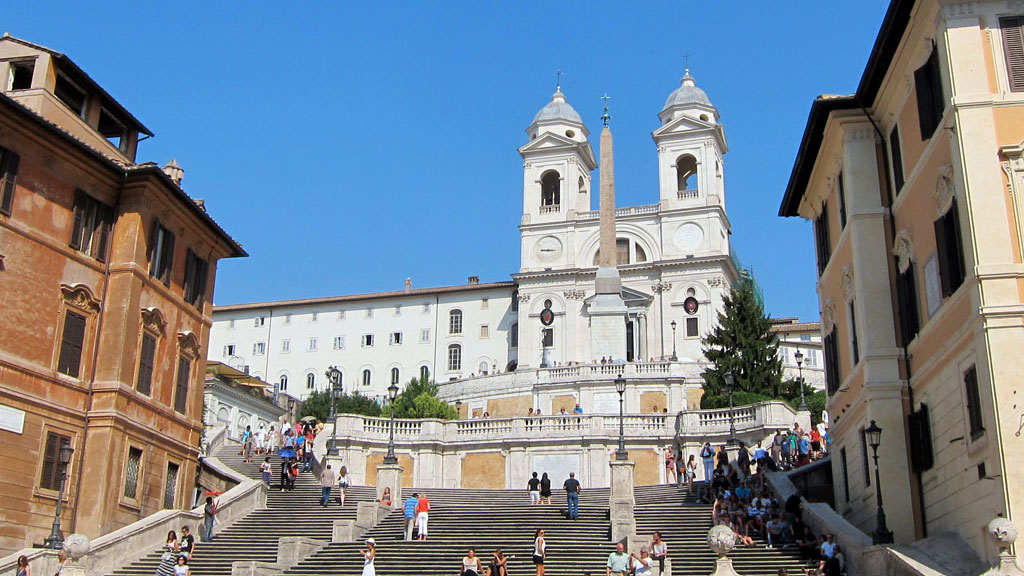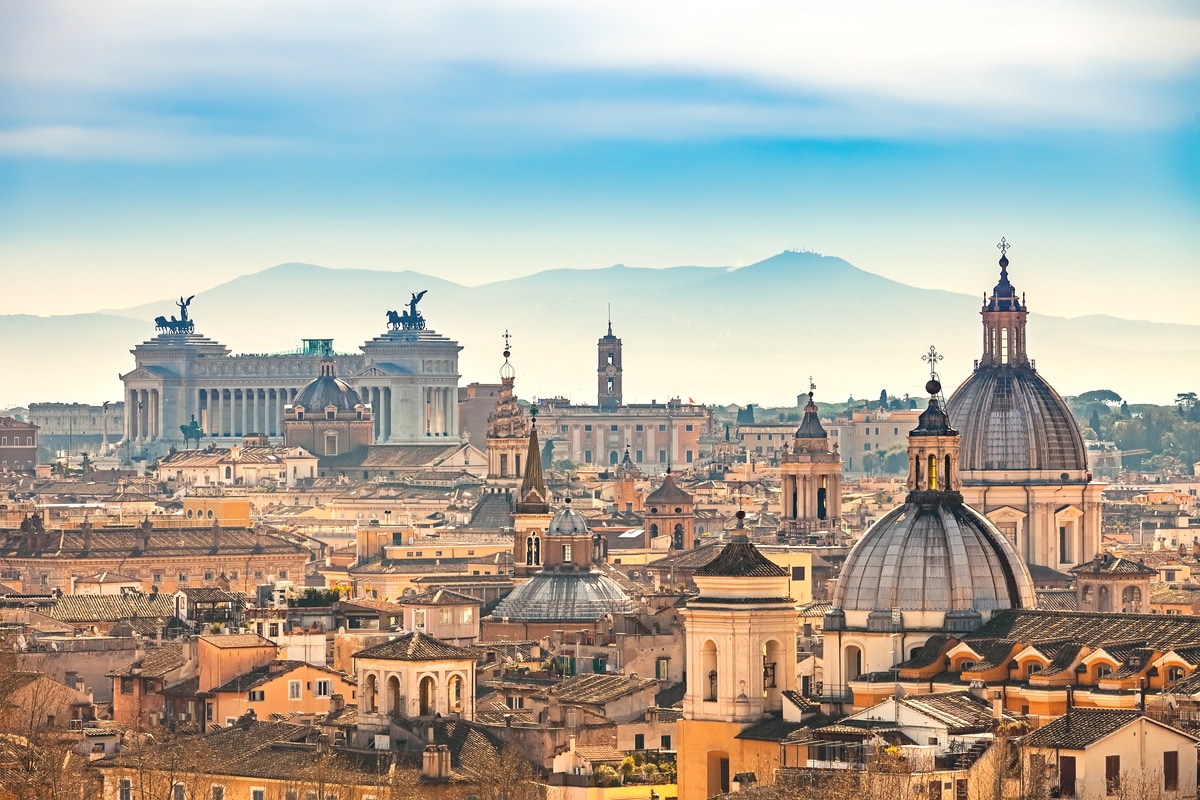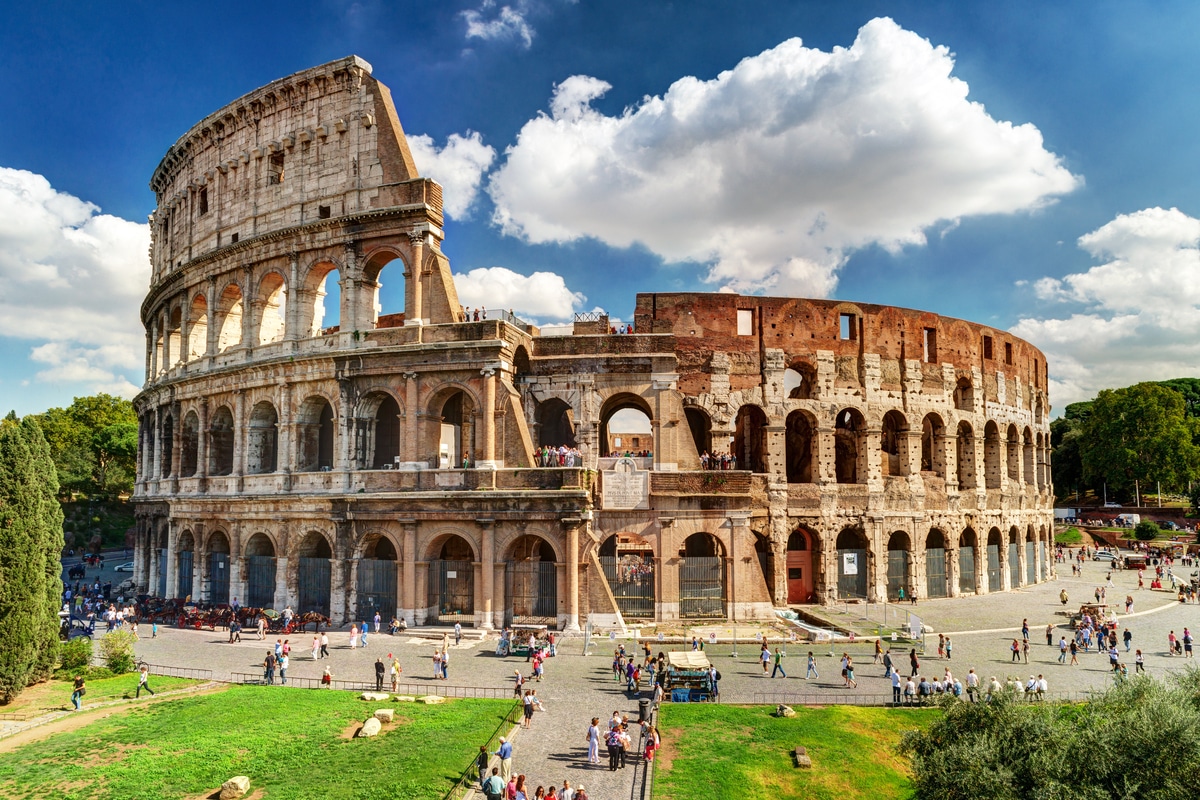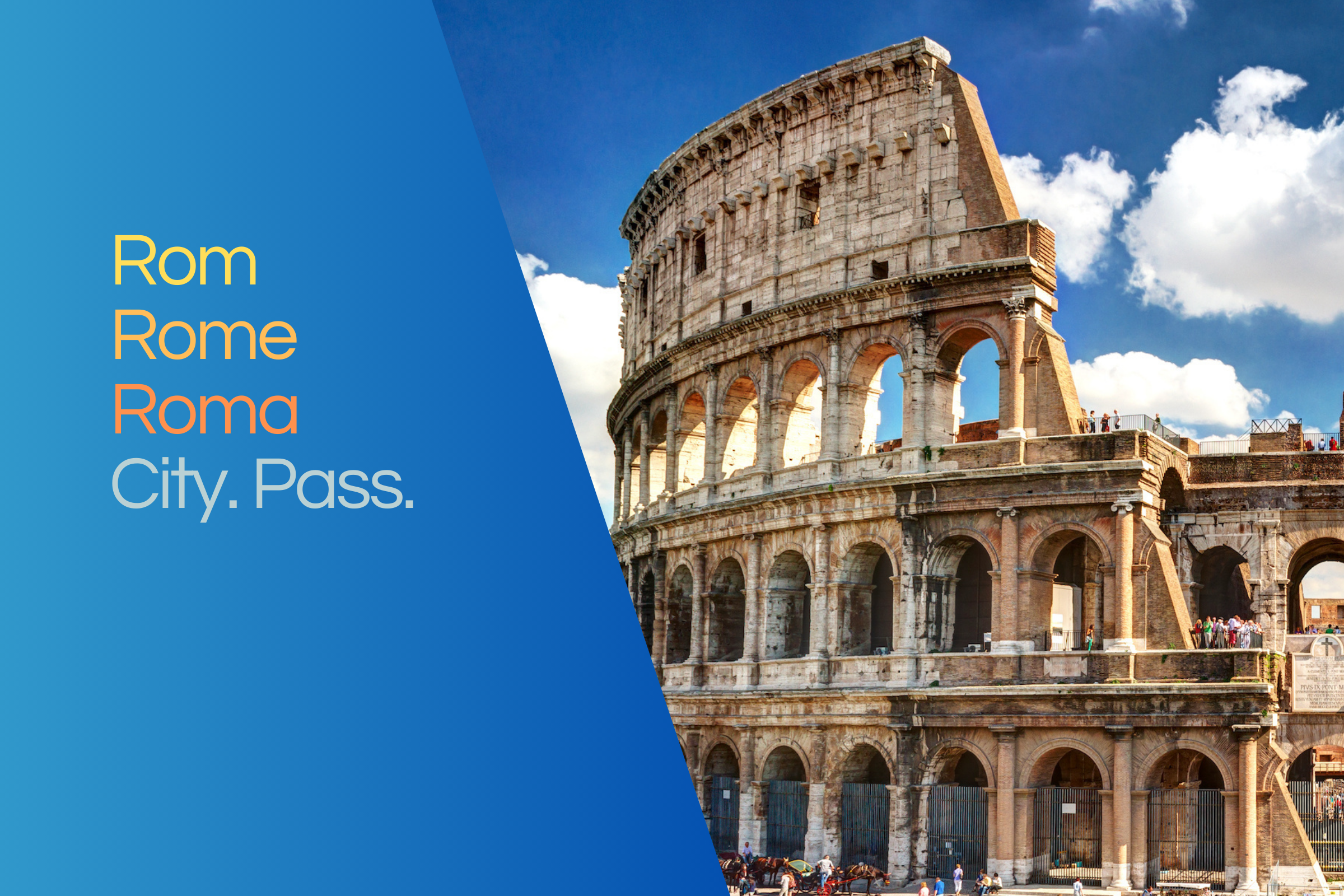The Spanish Steps with its 136 steps is one of the most famous sights of Rome and a popular meeting point for tourists.
History of origins
The name of the staircase comes from the Piazza di Spagna, located below the staircase, which was once the seat of the Spanish embassy in Rome. The square in front of the embassy's palace was Spanish territory at the time. The Italian name of the staircase is "Scalinata di Trinità dei Monti".
The staircase connects the Piazza di Spagna with the church of Santa Trinità above and was built on the instructions of Pope Innocent XIII. At the beginning of the 18th century, the urban area of Rome was already quite densely built up. Only between the Piazza di Spagna and the church Santa Trinità there was still a wild overgrown slope that was a thorn in the side of the Pope. The French King Louis XII also wanted to push for the construction of the staircase, because the church had been financed from his funds and he wanted a proper ascent to his place of worship. There were differences between the Vatican and France over the architectural style of the staircase. The Pope finally prevailed and the construction was done in the Italian style of late baroque and rococo. However, the largest staircase in the world is also decorated with Bourbon lilies, symbols of the French king.
Today, the 136-step Spanish Steps is a popular meeting place for tourists and Romans. Many Romans spend their lunch break in the bustle of the stairs. Often, the staircase is so crowded that the steps cannot be seen. The irregularly shaped staircase, where there is almost no right angle, serves as a stage for street artists and a number of couples in love can also always be found on the staircase.
Tip of the editors
During the day, the Spanish stairs are very crowded by tourists. Therefore, a visit should be planned indealerweise in the early morning.





